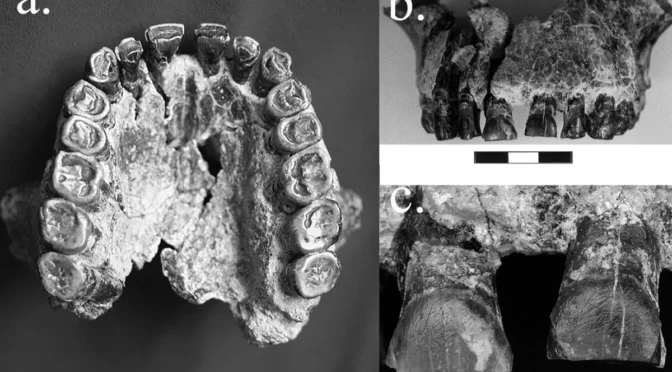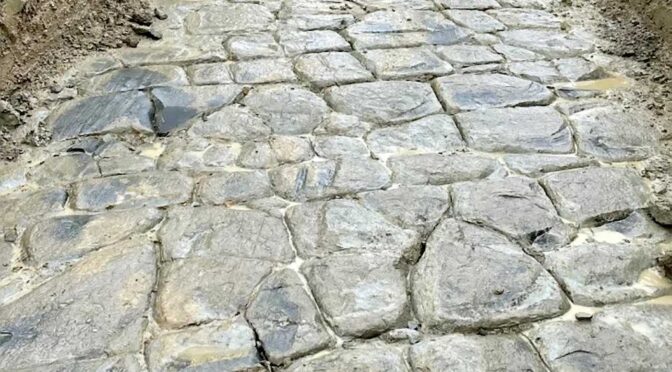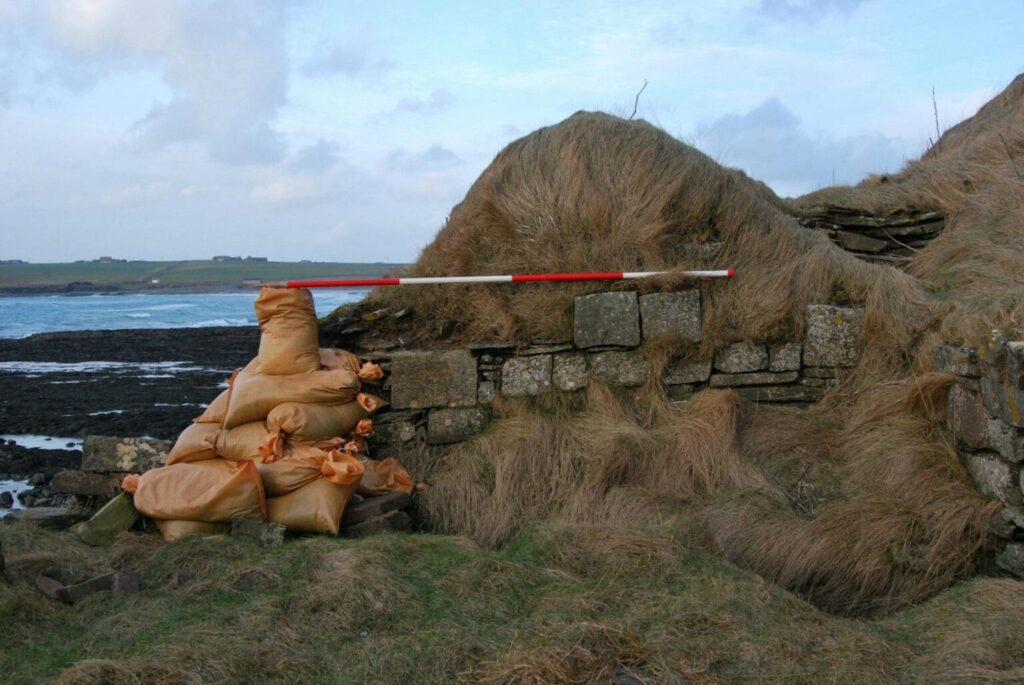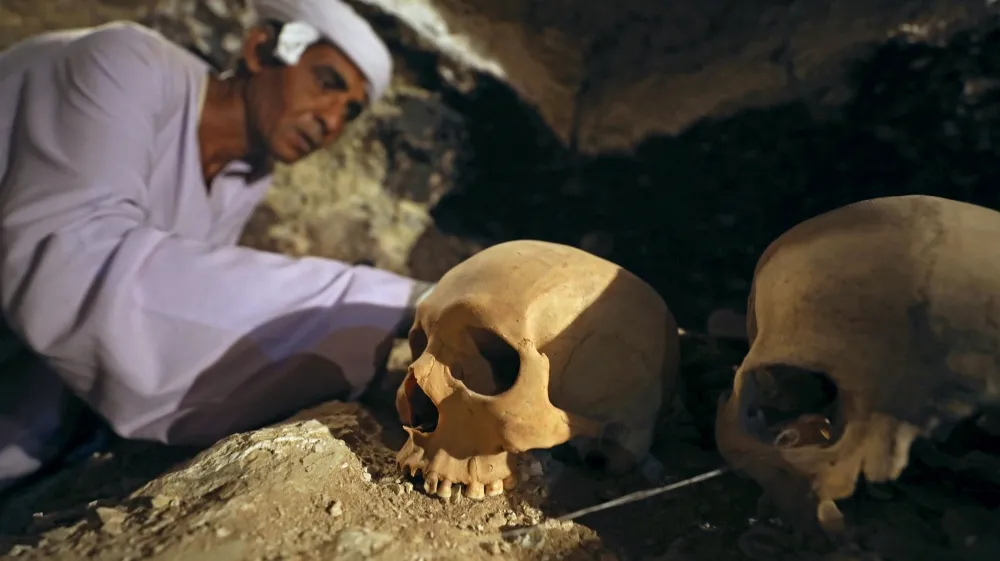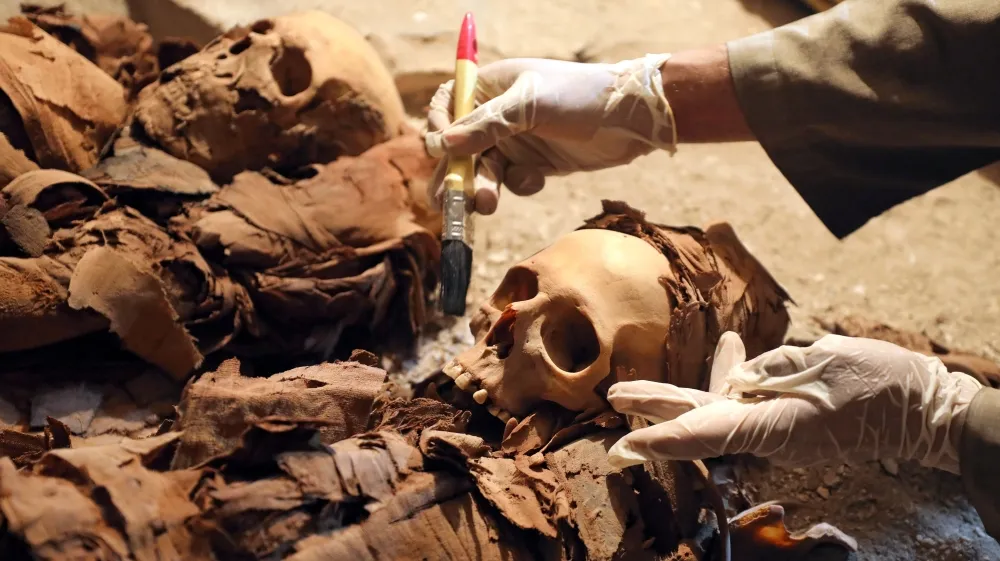The Italian hill made entirely of 53 million Roman olive oil jars
Monte Testaccio is a mound made up of shards of broken pottery covering about 220,000 square feet, holding 760,000 cubic yards of broken pottery vessels, known as amphorae, which were used to transport olive oil.
Excavations are still in progress, but the most recent finds indicate it may have originated as early as 140 A.D. Archaeologists agree future excavations could reveal that it could have been even earlier.

The easternmost side is the oldest of the triangular shaped, terraced mound. Paths were constructed by using smaller shard pieces throughout the four stepped terrace levels to enable the continuation of amphorae disposal and the height of the hill.
Most of the pottery shards are those of a Dressel 20, the one gallon sized amphorae from Baetica in what is now the Guadalquivir region of Spain, but remains from Tripolitania, now Libya, and Byzacena , now Tunisia, have also been found.
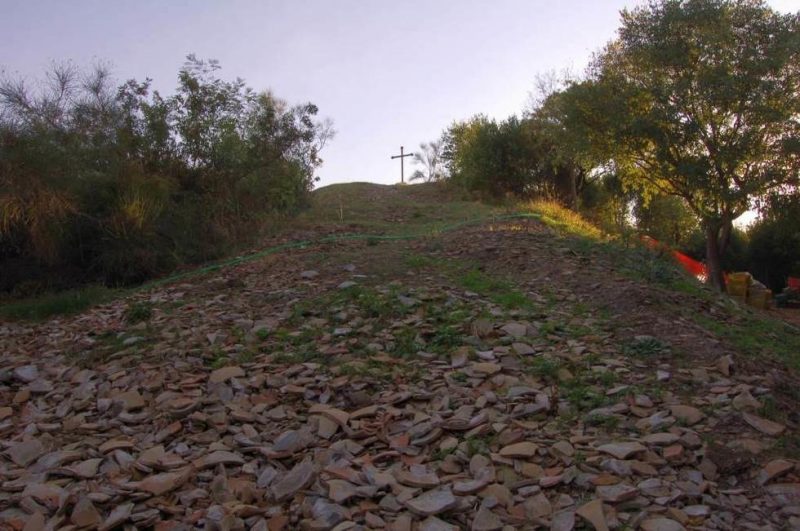
It has been established that these were bulk containers used for shipping olive oil, but why were no other types of shipping containers added to the mound?

The Romans also imported grain and wine, but as of yet, very few of these types of containers have been found. The Dressel 20 amphora did not easily break into the small pieces needed for recycling into concrete, which could be the reason they were simply discarded.
Another possibility is that the residual oil left on the shards would have reacted poorly with the lime content used when making the concrete. José Remesal of the University of Barcelona and co-director of the Monte Testaccio excavations believes the hill contains the remains of over twenty-five million amphora, and his team is recovering over a ton of pottery every day.


They are searching for any type of identification that could be stamped, painted or carved into the clay.
Most amphorae used during the time noted the weight, information about where the oil originated and names of the people who bottled and weighed the shipment which is indicative of a stringent inspection system used to control trade.
The empty weight, as well as the full weight, was recorded and the names found give insight into the Roman commercial structure. Many list family businesses such as “the two Aurelii Heraclae, father and son” and “the two Junii, Melissus and Melissa” as well as small groups of men “the partners Hyacinthus, Isidore and Pollio” and “L. Marius Phoebus and the Vibii, Viator and Retitutus”, who were most likely members of joint ventures of skilled freedmen.
The team is also able to identify that the state authorized the shipment of the oil and if the oil was for the military or civilian use.The search has already yielded inscriptions indicating oil shipments delivered to the Praefectus Annonae, the leading official of the state run food distribution services. According to Remesal, “There’s no other place where you can study economic history, food production and distribution, and how the state controlled the transport of a product. It’s really remarkable.”
Around the 260s, a new type of amphora was being used and the mound ceased growing.The area was abandoned after the fall of Rome and was used for jousting tournaments and pre-Lent festivals during the Middle Ages, and was still in use for celebrations by the end of the 19th century.

In 1827 Marie-Henri Beyle, a 19th-century French writer known by his pen name, Stendhal, attended a festival at the hill’s summit and had this to say: “Each Sunday and Thursday during the month of October, almost the whole population of Rome, rich and poor, throng to this spot, where innumerable tables are covered with refreshments, and the wine is drawn cool from the vaults.
It is impossible to conceive a more animating scene than the summit of the hill presents.Gay groups dancing the saltarella, intermingled with the jovial circles which surround the tables; the immense crowd of walkers who, leaving their carriages below, stroll about to enjoy the festive scene …”

The vaults to which Stendhal refers are excavations made when it was discovered that the porous structure of the interior provided a cooling effect, leading to the construction of wine cellars to keep the drink cool in the warmer months. In 1849 Giuseppe Garibaldi, the commander of an Italian gun battery successfully defended Rome against an attack from the French army at the mound.
Catholics use the hill as a representation of Golgotha, the hill on which Jesus was crucified.The Pope leads a procession to the top of the hill where they place crosses to memorialize those of Jesus and the two thieves crucified with him.

In 1872 German Archaeologist Heinrich Dressel began the first archeological study of Monte Testaccio and published his findings in 1878. Archaeologists Emilio Rodríguez Almeida and José Remesal Almeida also worked at the site during the 1980s.
After World War II developers came in and built middle class homes prompting stores and restaurants to open in the area. Velavevodetto, a popular pizza restaurant, was actually built into the side of the hill.Locals generally don‘t pay much attention to the mound and some don’t even realize the historical significance attached.
Up until August of this year Remesal’s web site www.archaeospain.com was taking applications for twenty-four volunteers at the geological site for two weeks during the month of September and describe the project as “Located in the heart of Rome, the Monte Testaccio project is one of the most important research programs on Roman epigraphy, economy, and commerce today.
The project, overseen by the University of Barcelona and ArchaeoSpain, studies the pottery shards from an artificial mound created by centuries of discarded amphorae‚ many of which still have the maker’s seal stamped on their handles, while others retain markings in ink relating the exporter’s name and indicating the contents, the export controls, and consular date.
Once an ancient pottery dump, Monte Testaccio is now one of the largest archives of Roman commerce in the world.”











